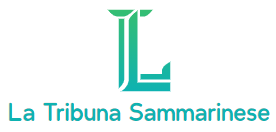La maggior parte delle infezioni virali sono difficili da controllare e sono causate da virus a RNA. I metodi di ingegneria virale possono essere adattati alla progettazione di vaccini efficaci e intelligenti fondendo i progressi nella genetica inversa con le intuizioni della vaccinologia del sistema.
soggiorno: Ingegnerizzazione di virus a RNA utilizzando amminoacidi innaturali per suscitare una risposta immunitaria modificabile nei topi. Credito di immagine: deepadesigns/Shutterstock
Un virus incompetente che si riproduce e si diffonde utilizzando l’espansione del codice genetico produce una forte immunità e sabota i metodi vaccinali tradizionali. Il passaggio critico è l’incorporazione di amminoacidi innaturali (UAA) nel polipeptide virale nascente in siti selezionati mediante massicce mutazioni casuali. La modifica dell’UAA consente il controllo artificiale della replicazione del virus e può aiutare nella stampa orizzontale degli anticorpi desiderati.
studiando
Una nuova esperienza è stata pubblicata su bioRxiv* Server di prestampa Ha ideato un nuovo metodo per trattare i virus virulenti nei laboratori convenzionali e ha convalidato l’effetto protettivo di questo metodo in due modelli murini.
Lo studio prevedeva l’applicazione della tecnica di espansione del codice genetico per modificare l’Enterovirus 71 (EV71), il principale patogeno dell’afta epizootica (HFMD), come modello per:
- Testare se l’EV71-UAA potenziato comporta il mantenimento della forma infettiva completa per l’immunogenicità e la replicazione sotto controllo sintetico in vitro e in vivo per la sicurezza.
The virus was then allowed to evoke strong and adjustable antibody responses in normal and transgenic mice harboring PylRS-tRNAPylCUA pairs – to validate the rationale of vaccinating susceptible individuals with differing immunity levels.
Findings
The results depicted the successful expression of MmPylRS, tRNAPyl, and NAEK-dependent GFP39TAG carrying amber-codon replacements in 39 sites. This enables the selection of cell lines with efficient UAA translation machinery. Additionally, the machinery’s introduction did not markedly affect cell proliferation in either line, which was beneficial for viral packaging and propagation.
The cell line with engineered systems was found to have gene expression patterns identical to HEK293T cells – with notable differences from EV71-infected HEK293T cells. While the number of differentially expressed genes (DEGs) in EV71-infected HEK293T cells was much higher than that in the stable cell line ± NAEK groups. Whole transcriptome analysis (WTA) results were similar in the NAEK-Vero stable cell line. The findings suggested that the effect of UAA incorporation was far less than that of viral infection, and this system was appropriate for controllable viral production.
This successful viral-engineering strategy defined guidelines for UAA incorporation and viral generation that could be broadly expanded to other RNA viruses. The strategy provides a potential solution to the immediate dilemma on vaccination – by harnessing EV71-NAEK to elicit strong immune responses.
The established two-round viral-engineering system—consisting of NAEK-HEK293T cells for transfection and NAEK-Vero cells for propagation—could generate UAA-engineered viruses for main intestinal pathogens with high efficiency. These included enteroviruses and coxsackieviruses.
This principle may be adapted to the diverse set of viable UAAs37 to generate engineered viruses with different modes of incorporation. Thus, the viral phenotypes can be simultaneously modified to render several desirable properties, such as improved cell tropisms and replication.
The findings underscored that the modifiable EV71-NAEK could infect and replicate in vivo to induce controlled immune responses. This was the first demonstration of vaccination with a controllable pathogen to evoke adjustable antibody landscapes.
For this, the antibodies varied from 0.5-fold to approximately 2.5-fold in an external NAEK dose-dependent manner. Therefore, depending upon the host’s immunity, efficient protection can be obtained through an optimal dose of UAA. The replication of EV71-3D-E105NAEK was NAEK-controllable and dose-dependent – implying that EV71-3D-E105NAEK could be a potentially safe vaccine candidate.
The UAA-engineered virus would efficiently prime the human immune system with transient delivery of PylRS-tRNAPylCUA pairs and oral UAA uptake. This illustrates a novel and convenient vaccine strategy for combating emerging viruses. It is anticipated that the development of synthetic gene circuits for sensing immune responses and outputting UAAs to control viral replication could become the basis of a future immunization program.
This experiment explored a novel strategy to convert infectious viruses with UAA to achieve controllable viral replication to render an adjustable immune response in vivo. This is likely to be the next-generation vaccine candidate. Hence, the present study laid the foundation for a bioengineering design of smart vaccine candidates – with the application of synthetic biology and viral engineering.
*Important notice
bioRxiv publishes preliminary scientific reports that are not peer-reviewed and, therefore, should not be regarded as conclusive, guide clinical practice/health-related behavior, or treated as established information.





/cdn.vox-cdn.com/uploads/chorus_asset/file/24347780/STK095_Microsoft_04.jpg)

